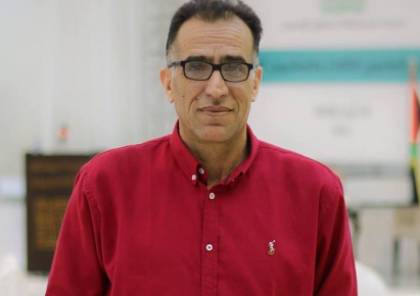Hamas responds: Let the movement choose how it will be executed
Al-Khamisa News Network - Gaza

Akram Atta Allah
Over the past two years we have repeatedly written that Hamas is at one of its toughest crossroads and that its options are steadily narrowing, and because the downward trend points to further strangulation of a movement that has not yet grasped the gravity of the moment. In later articles we will write that the movement’s options were more comfortable weeks ago; it now stands at a very dark station and does not know how to respond after being politically isolated by the Americans, who managed to extract support from Hamas’s closest patrons, Turkey and Qatar, and after being encircled on the ground by Israel with no options left. Death is before it and the sea behind it — but this is not the age of Tariq ibn Ziyad.
Under Trump’s plan it becomes clear that Hamas’s choices are either to accept the plan and die a soft death, or to reject it and die violently through the completion of the occupation of Gaza City, then the central area, and the razing of Gaza, including Hamas. There is no middle ground; he left them only to choose the form of their death or the means by which they will be executed.
Contrary to the will of Gazans, who are paying the price of Hamas’s rule — now evident in its level of performance despite having seen enough examples of incompetence and now paying with the flesh of their loved ones and the destruction of homes as the result of the greatest gamble — many want the movement to surrender everything quickly, aware that no one will change the balance of facts on the ground that has been unfolding for two years. This conflicts with the movement’s ideological and political makeup.
The Islamic movement cannot accept provisions contained in Trump’s plan, because that would mean consenting to its own execution. Surrendering arms is not merely a technical or administrative step; it is about the idea of political Islam and the justification for its existence among Palestinians. When the movement was formed in 1987 it made resistance part of its name — “the Islamic Resistance Movement” — and it emerged a week after the start of the First Intifada as the most prominent expression of confrontation with Israel, or at least the most attuned to that climate. The movement then expanded in the 1990s when the national movement pursued a settlement with Israel and left a gap of confrontation to be filled; Hamas moved in to fill it, believing that the settlement track would not lead to a solution and that it had the solution through armed action and the capacity to liberate all of Palestine and expel the Jews — a horizon far beyond realistic possibilities. It received its largest boost during the Second Intifada and the armed clashes and later won elections.
What would it say now if it agreed and handed over its arms? How would history judge it? If history summoned it at one moment, what would it do to it at an opposite moment? These are the realities: despite Hamas’s defiance, it has reached that existential juncture. But one cannot expect it to accept and to declare the failure of its option and the cost of its existence to the Palestinian people. Political sociologists have examined such phenomena and argued that it is the functional role that summons an institution, not the other way around — the vacuum of the 1960s summoned the PLO, the vacuum of confrontation after Oslo summoned Hamas, and so did the two intifadas. But with the American plan and with the surrender of arms, it is as if Hamas must declare the end of its functional role, fold up its history, and leave — especially after an adventure that is the most catastrophic for the Palestinian people: it took charge of a coastal city and a living population only to hand over a ruin, a heap of rubble and a people split between displaced and refugees in tents.
If Hamas objects, the consequences will be even more catastrophic, meaning a renewed license to raze Gaza — a license that seemed to have been eroded at last week’s New York demonstration. Netanyahu indicated that by accepting Trump’s plan — one he was certainly a full partner in drafting, if not its sole author — “by our approval of President Trump’s project the pressure shifts to Hamas,” repeating what he has done throughout the war: he puts forward plans and proposals that are hard to accept to shift responsibility onto the movement. His cunning reached the point a few weeks ago of dragging it into negotiations over 400 metres while his tanks were rolling across thousands of metres, but then he fell into a trap.
Netanyahu’s government would not be secure if it implemented Trump’s plan, so its pillars are counting on Hamas’s generosity in refusing it to rescue them from a dismantling dilemma after the appetite of the government’s extremists for settlement was whetted by expelling the inhabitants. Ben Gvir even specified who would get the seaside apartments in what he called the “Police Neighborhood.”
As usual, Hamas will fall into the ambush: all its options are difficult and what is presented to it is nothing but death, and it can only choose the means of execution. So it is trying to emerge with a middle formula through terms related to a truce it might propose in which it would retain some weapons for control, stop digging tunnels and training, with timetables for withdrawal and things of that kind — reflecting Hamas’s detachment from a reality so glaring it is almost bright: it has not yet realized that by turning the resistance into a conventional army it invited a conventional defeat. Resistance does not get defeated, but armies do, and it suffered a major defeat. The defeated have no right to set a clause in a surrender agreement — thus history wrote its treaties — and whoever does not understand the equations and balances of power is criminal to rule peoples and control their destiny because he poses a danger to them… Gaza is the example.



